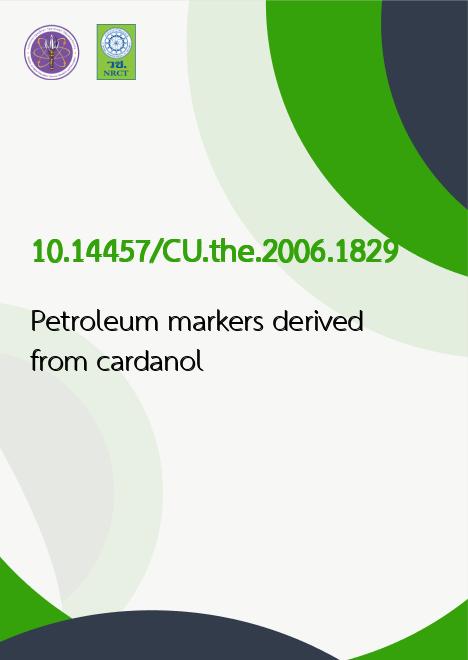
|
Petroleum markers derived from cardanol |
|---|---|
| รหัสดีโอไอ | |
| Title | Petroleum markers derived from cardanol |
| Creator | Sukanya Jiamworanunkul |
| Contributor | Amorn Petsom |
| Publisher | Chulalongkorn University |
| Publication Year | 2549 |
| Keyword | Petroleum, Petroleum -- Prospecting, Biochemical markers, Cashew nut, Cardanol |
| Abstract | Novel markers and simple, rapid, and sensitive detection methods of the markers were developed for use in tagging petroleum fuels. The petroleum markers were derived from cardanol and fell into two categories. The first comprised a number of the azo markers synthesized by the coupling reaction of 2-nitrocardanol with aniline and its derivatives. The azo markers had good solubility in diesel fuel and gasoline and were regarded as silent markers that no color was observable in the fuel oils at a commonly used level (5 ppm). On the other hand, the markers provided clearly visible colors when reacting with the appropriate developing reagent, resulting in stable homogeneous mixtures readily applied for the qualitative and quantitative determinations of the markers in the fuel oils with a vis spectrophotometer. The developing reagent consisted of benzyltrimethylammonium hydroxide, methanol, and 1-hexanol. The second was the fluorescent marker, the coumarin derivative prepared by the condensation reaction of cardanol with ethyl acetoacetate. The fluorescent marker was added into diesel fuel and gasoline at 100 ppm. Like the azo markers, the fluorescent marker had high compatibility with the fuel oils. Fluorescence spectroscopic technique was used to perform both qualitative and quantitative measurements of the marker using a spectrofluorometer. The fluorescence spectrum of the marked diesel fuel exhibited an emission peak attributed to the marker appearing at 312 nm when excited with the ultraviolet radiation having the wavelength of 267 nm. Additionally, the fluorescence spectrum of the tagged gasoline presented an emission band belonging to the marker occurring at 333 nm under the ultraviolet light at 300 nm. For both synthetic markers, the ASTM tests indicated that the physical properties of the marked fuel oils were similar to those of the unmarked fuel oils. Furthermore, the stability of the markers in the marked fuel oils was studied and found that the markers were stable over a period of at least 3 months. |
| URL Website | cuir.car.chula.ac.th |